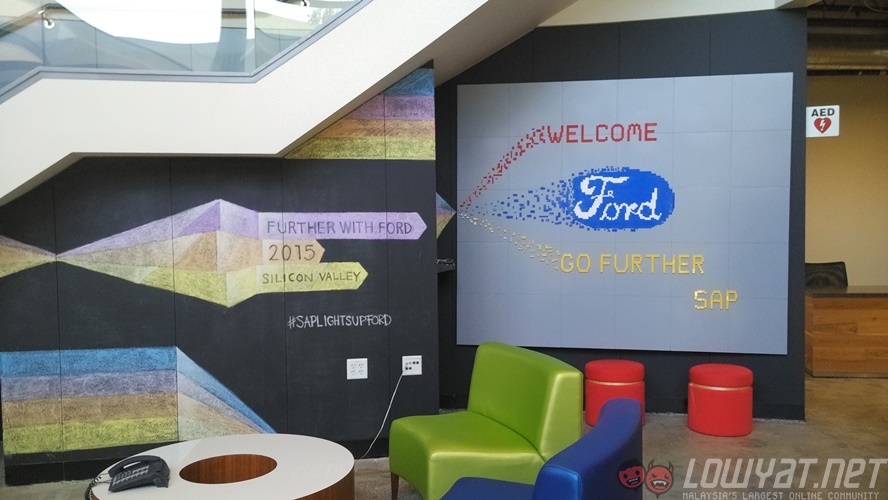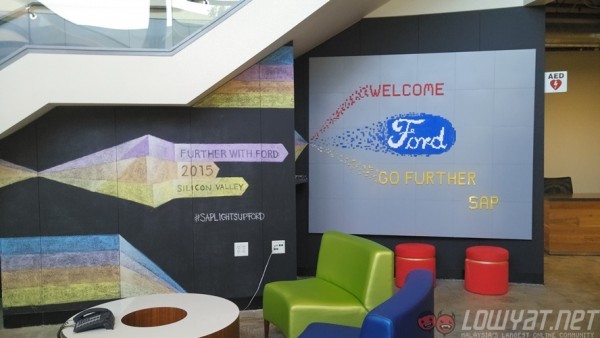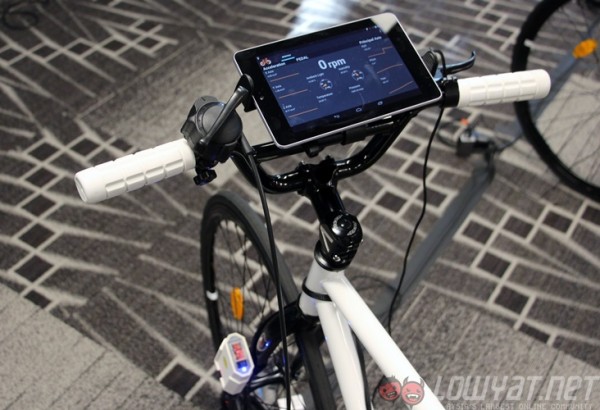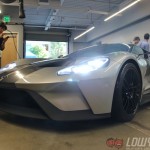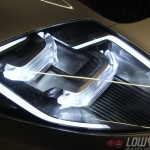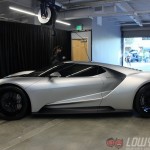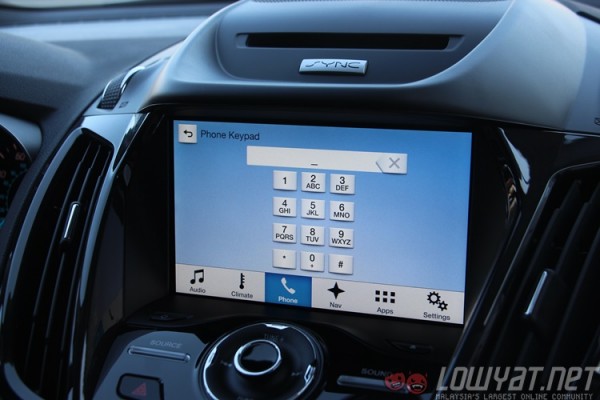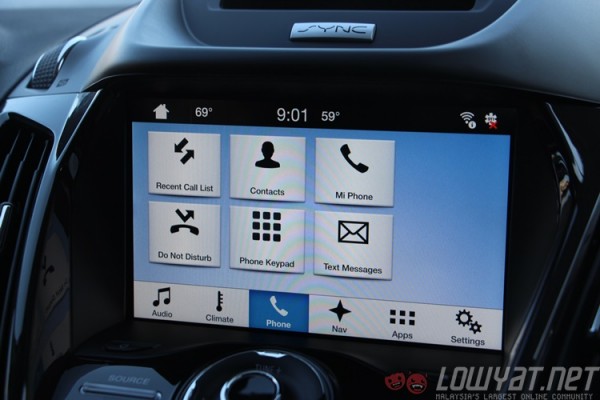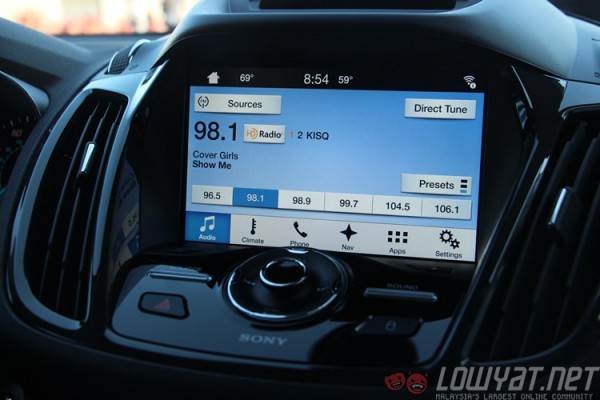Last week, we were invited to the annual Further with Ford conference, comprising of a series of keynotes and tours that revolve around a lofty theme: the future. We heard and saw plenty of Ford’s research findings on future trends, as well as an interesting convergence between the automotive and the technology industries. This was especially evident when we were invited to the company’s new Research and Innovation Lab. Here’s a glimpse of what we saw at the company’s state-of-the-art facility.
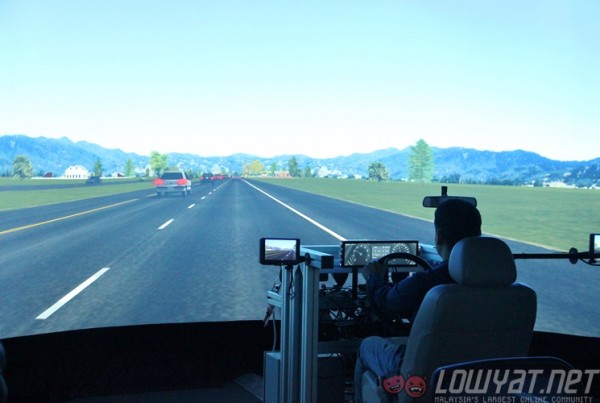 In the Immersion Lab, Ford has a huge driving simulator, utilising three HD projectors and a massive curved screen that spans from one side of the room to the other. The controls are kept as accurate as possible as one would in a car, but with tablets used as side mirrors.
In the Immersion Lab, Ford has a huge driving simulator, utilising three HD projectors and a massive curved screen that spans from one side of the room to the other. The controls are kept as accurate as possible as one would in a car, but with tablets used as side mirrors.
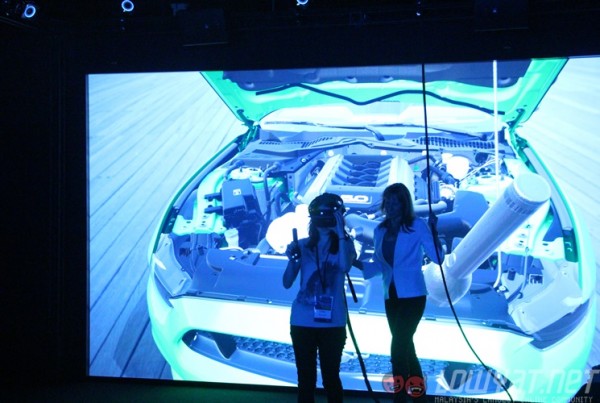 However, the focus of the Immersion Lab is the extensive use of virtual reality (VR). An engineer or designer is able to project a perfectly rendered model of a vehicle the company is currently designing, and go through finer details such as build, fit and finish and even colour hues without even building a prototype that would incur costs.
However, the focus of the Immersion Lab is the extensive use of virtual reality (VR). An engineer or designer is able to project a perfectly rendered model of a vehicle the company is currently designing, and go through finer details such as build, fit and finish and even colour hues without even building a prototype that would incur costs.
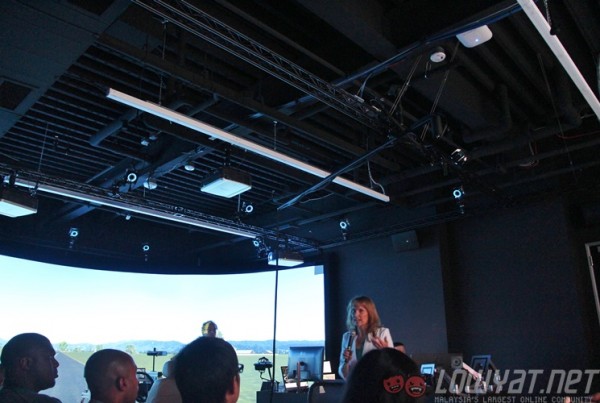 Above is where the magic really takes place. A set of sensors track the user’s headset as well as mock torchlight, giving the system points of reference.
Above is where the magic really takes place. A set of sensors track the user’s headset as well as mock torchlight, giving the system points of reference.
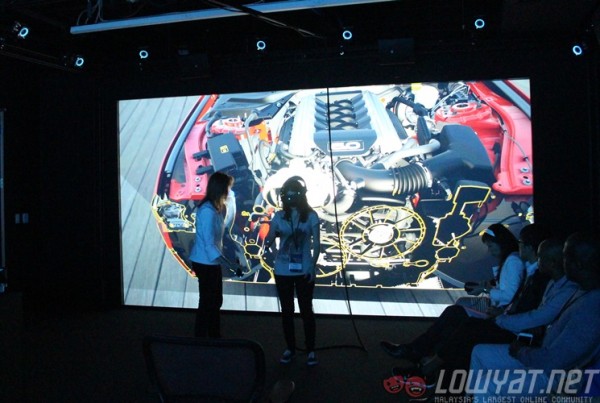 As the user walks closer and closer to the virtual vehicle, its outer parts slowly disappear to reveal the inner parts of the vehicle, such as the engine block. This again makes it super easy for the engineer or designer to inspect any potential issues with the vehicle – again, without actually building one.
As the user walks closer and closer to the virtual vehicle, its outer parts slowly disappear to reveal the inner parts of the vehicle, such as the engine block. This again makes it super easy for the engineer or designer to inspect any potential issues with the vehicle – again, without actually building one.
https://www.youtube.com/watch?v=8ykUBaxc8Qw&feature=youtu.be
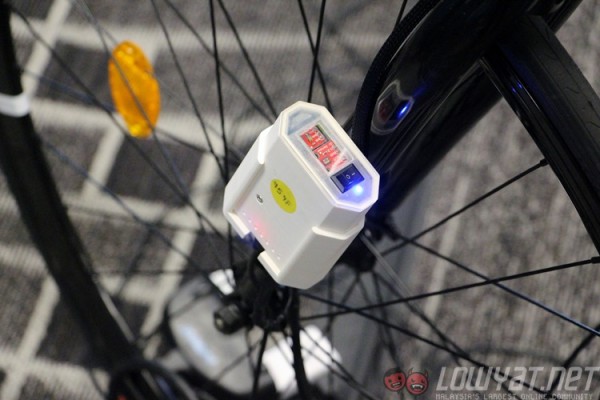 Ford is also actively experimenting with the idea of cyclists being active beacons to trasmit data such as local traffic, weather conditions and other useful information. The trackers will be stored and transmitted via this module, installed on the front wheel of a bike.
Ford is also actively experimenting with the idea of cyclists being active beacons to trasmit data such as local traffic, weather conditions and other useful information. The trackers will be stored and transmitted via this module, installed on the front wheel of a bike.
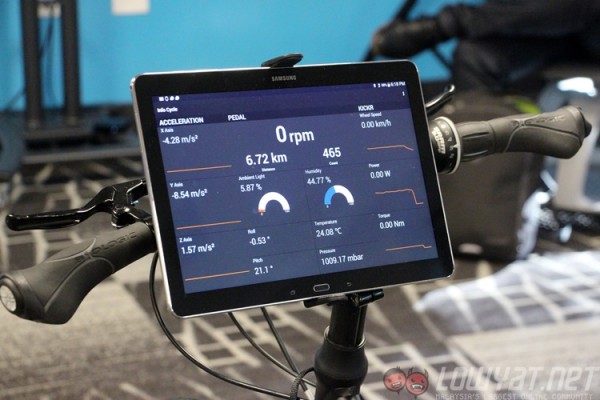 When connected locally, the InfoCycle module is able to transmit real-time data for the user, showing off the current speed, incline, and revolutions made per minute.
When connected locally, the InfoCycle module is able to transmit real-time data for the user, showing off the current speed, incline, and revolutions made per minute.
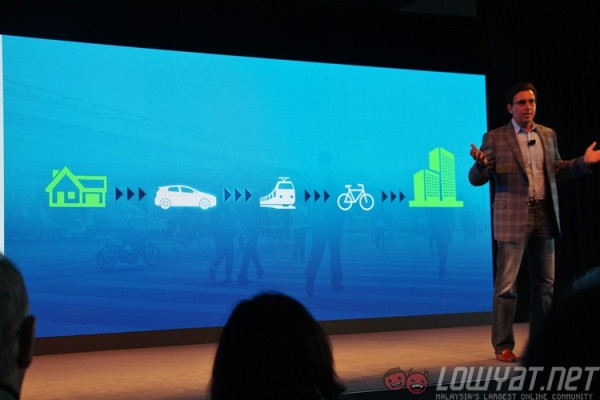 In the future, Ford also predicts a phenomenon called “multi-modal city transport”. In mega-cities of the future, a citizen would drive to the nearest public train station and park their cars, before boarding a train. From the nearest train station, the citizen would then continue their journey either on foot, or bicycles of the future, which are designed to be light, motorised and collapsible for easy handling.
In the future, Ford also predicts a phenomenon called “multi-modal city transport”. In mega-cities of the future, a citizen would drive to the nearest public train station and park their cars, before boarding a train. From the nearest train station, the citizen would then continue their journey either on foot, or bicycles of the future, which are designed to be light, motorised and collapsible for easy handling.
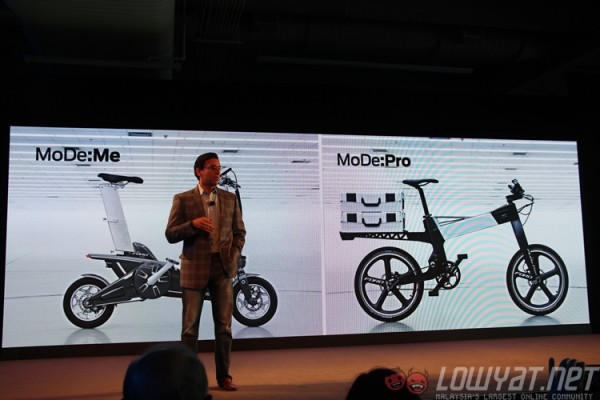 Ford already has two such e-bikes: the MoDe:Me and MoDe:Pro. A new model was announced called the MoDe:Flex, which is designed to be collapsible and fits easily into a car boot. Intelligent sensors on the bike measure your energy outputs and assists pedalling with the motor to ensure you don’t over exert yourself on the way to work.
Ford already has two such e-bikes: the MoDe:Me and MoDe:Pro. A new model was announced called the MoDe:Flex, which is designed to be collapsible and fits easily into a car boot. Intelligent sensors on the bike measure your energy outputs and assists pedalling with the motor to ensure you don’t over exert yourself on the way to work.
https://www.youtube.com/watch?v=R4Hiclb18RM&feature=youtu.be
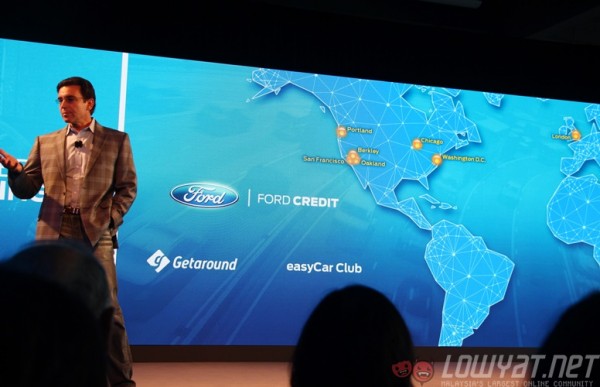 You may have heard of peer-to-peer sharing (P2P) which usually involve content sharing over the Internet, but what about peer-to-peer car sharing? This isn’t some prediction of the future, but rather one that is *already* happening right now. In San Francisco and five other US cities, a service called Getaround has been operating what is known as “the Airbnb for cars”.
You may have heard of peer-to-peer sharing (P2P) which usually involve content sharing over the Internet, but what about peer-to-peer car sharing? This isn’t some prediction of the future, but rather one that is *already* happening right now. In San Francisco and five other US cities, a service called Getaround has been operating what is known as “the Airbnb for cars”.
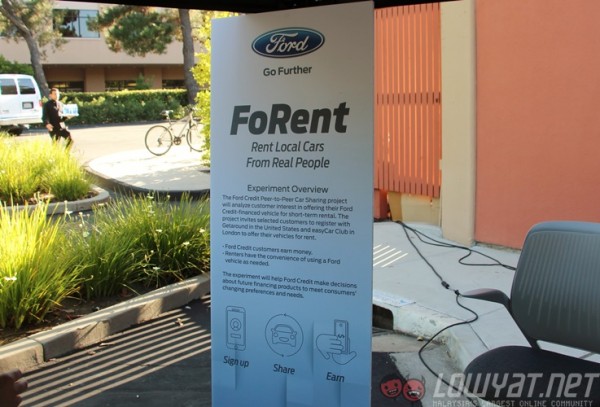
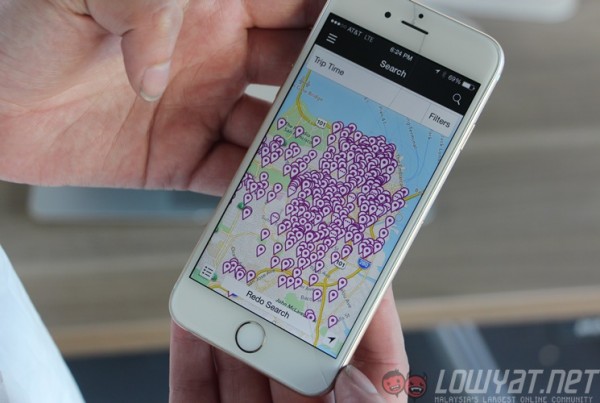 Essentially, users can rent out their cars when they are not in use, allowing them to make some money from their cars. On Getaround, users pay $20 a month to install a piece of hardware that records a renter’s driving pattern for insurance purposes. All Getaround cars are insured up to a grand sum of $1 million for any damage that happens to your car while it is being rented.
Essentially, users can rent out their cars when they are not in use, allowing them to make some money from their cars. On Getaround, users pay $20 a month to install a piece of hardware that records a renter’s driving pattern for insurance purposes. All Getaround cars are insured up to a grand sum of $1 million for any damage that happens to your car while it is being rented.
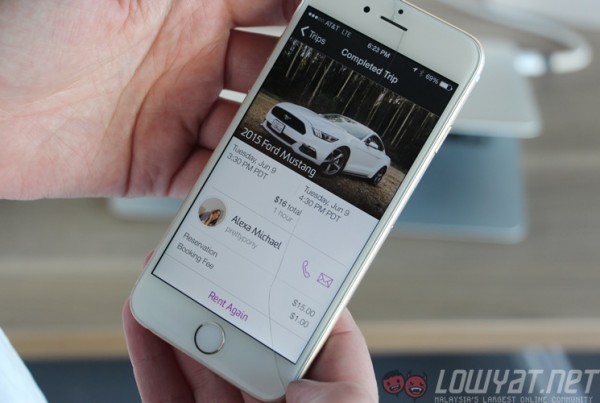 The app, which works on both web and mobile in the six US cities, lets you view all cars currently available in the city. Just like Airbnb, the entire process is cashless (using credit cards), and the installed hardware also allows renters to unlock the rented car when they are close by. The best part? You can drive the car anywhere with virtually no restrictions – you only need to leave the car with the same fuel level before you used it, and that it is securely parked anywhere within the city you rented it in. Rent, drive, park, and leave – brilliant.
The app, which works on both web and mobile in the six US cities, lets you view all cars currently available in the city. Just like Airbnb, the entire process is cashless (using credit cards), and the installed hardware also allows renters to unlock the rented car when they are close by. The best part? You can drive the car anywhere with virtually no restrictions – you only need to leave the car with the same fuel level before you used it, and that it is securely parked anywhere within the city you rented it in. Rent, drive, park, and leave – brilliant.
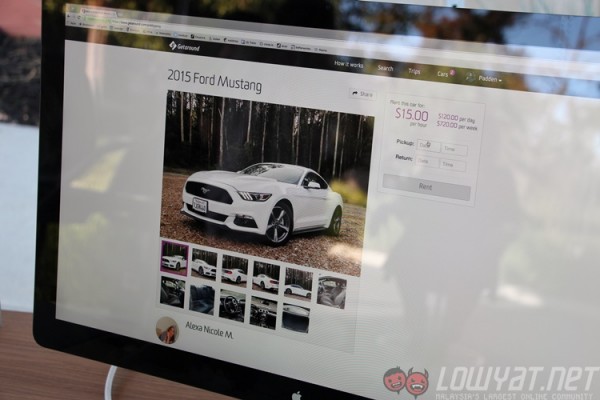 And, as you can see, the rates are pretty attractive. Have a hot date that you’d like to impress? Rent this Ford Mustang for just $15 (about RM57) an hour! You can rent the cars on Getaround on an hourly, daily, weekly or even monthly basis.
And, as you can see, the rates are pretty attractive. Have a hot date that you’d like to impress? Rent this Ford Mustang for just $15 (about RM57) an hour! You can rent the cars on Getaround on an hourly, daily, weekly or even monthly basis.
https://www.youtube.com/watch?v=YogQELG1lnc&feature=youtu.be
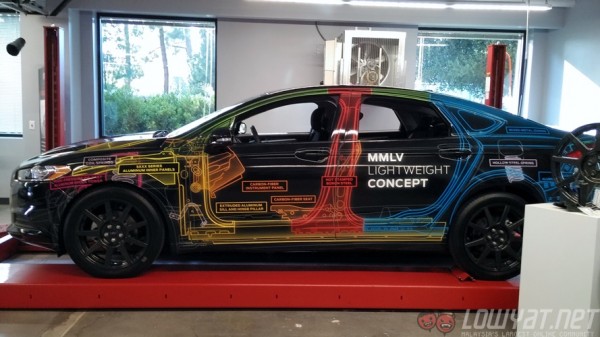 At one of the centre’s garages, there is the MMLV Light Weight Concept Car. It’s short for Multi-Material Lightweight Concept Car, and the project was initiated by automotive supplier Magna International in cooperation with Ford. An R&D concept which uses materials traditionally not used for vehicles, such as a central structure made from an aluminium composite, the car (based on a production model of the 2013 Ford Fusion aka Mondeo) is 25% lighter than a standard production Fusion, but without any visible differences both in design and build.
At one of the centre’s garages, there is the MMLV Light Weight Concept Car. It’s short for Multi-Material Lightweight Concept Car, and the project was initiated by automotive supplier Magna International in cooperation with Ford. An R&D concept which uses materials traditionally not used for vehicles, such as a central structure made from an aluminium composite, the car (based on a production model of the 2013 Ford Fusion aka Mondeo) is 25% lighter than a standard production Fusion, but without any visible differences both in design and build.
https://www.youtube.com/watch?v=69yXAyQGixA&feature=youtu.be
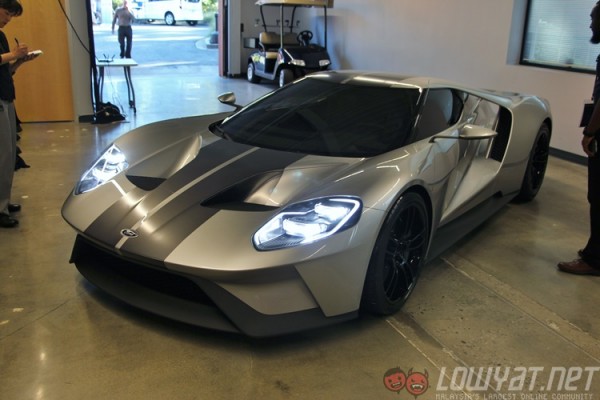
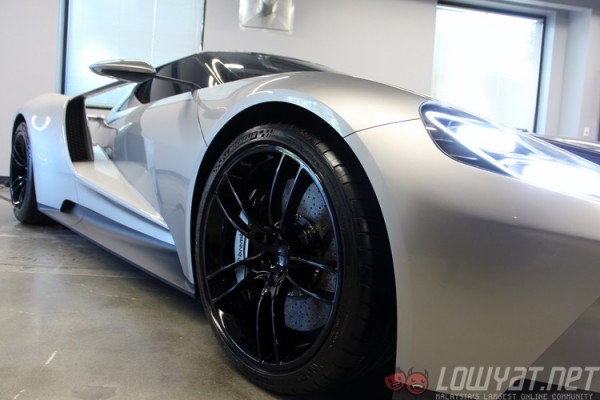 Also at the garage is the 2016 Ford GT supercar, which was recently unveiled at the recent 2015 North American International Motor Show.
Also at the garage is the 2016 Ford GT supercar, which was recently unveiled at the recent 2015 North American International Motor Show.
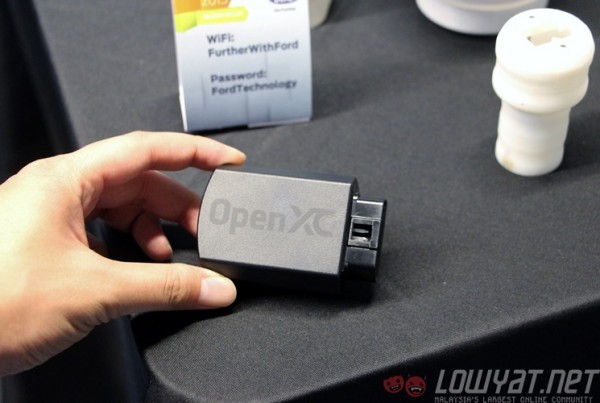 Ford also had the OpenXC hardware module on display. Essentially a similar project to InfoCycle, the module collects various data that is available in an open source platform called OpenXC. Developers can tap into the platform to gain access to the data and present it in various ways, with the ultimate goal of educating drivers to be better drivers through actual data collected from their driving habits.
Ford also had the OpenXC hardware module on display. Essentially a similar project to InfoCycle, the module collects various data that is available in an open source platform called OpenXC. Developers can tap into the platform to gain access to the data and present it in various ways, with the ultimate goal of educating drivers to be better drivers through actual data collected from their driving habits.
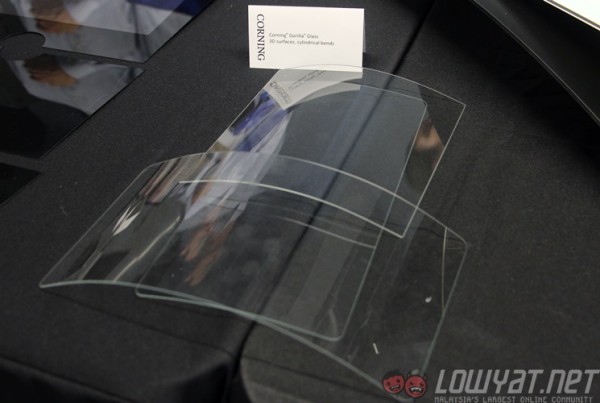 At the garage, we also spotted Corning’s array of Gorilla Glass solutions for vehicles. From Gorilla Glass 4 windows that are 30% lighter than standard windows, to curved glass panels for touchscreen displays of future car entertainment systems, Corning looks set to enter another lucrative market segment.
At the garage, we also spotted Corning’s array of Gorilla Glass solutions for vehicles. From Gorilla Glass 4 windows that are 30% lighter than standard windows, to curved glass panels for touchscreen displays of future car entertainment systems, Corning looks set to enter another lucrative market segment.
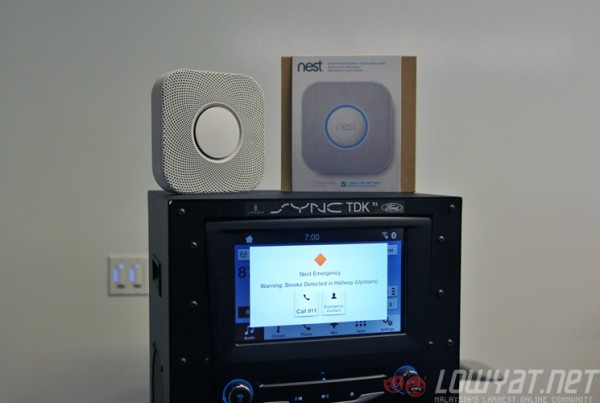 At the age of the Internet of Things (IoT), virtually every product you own can communicate with one another. Ford’s new Sync 3 in-car entertainment system, for example, is being researched to allow syncing with the Nest thermostat, which is already being touted as the “brains” of a smart home. Imagine if, as you are driving home, your Ford car sends a signal to the Nest to adjust the home temperatures to be cool just as you arrive home. Or, as the image above shows, to warn you that the Nest Smoke Detector has been triggered at home.
At the age of the Internet of Things (IoT), virtually every product you own can communicate with one another. Ford’s new Sync 3 in-car entertainment system, for example, is being researched to allow syncing with the Nest thermostat, which is already being touted as the “brains” of a smart home. Imagine if, as you are driving home, your Ford car sends a signal to the Nest to adjust the home temperatures to be cool just as you arrive home. Or, as the image above shows, to warn you that the Nest Smoke Detector has been triggered at home.
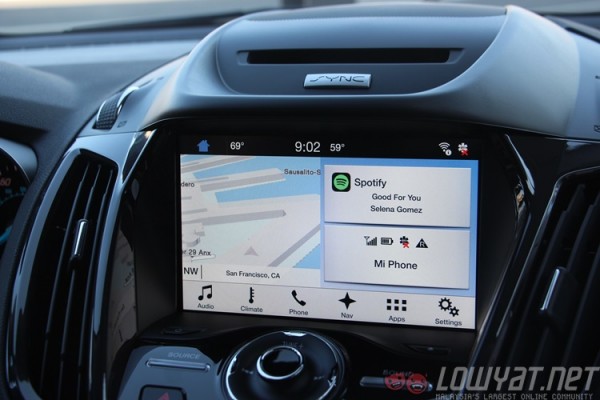 Speaking of Sync 3, here it is in real life. Based on the QNX platform, the system is touted to be faster and more responsive than ever before. It also allows you to connect your smartphone and have access to supported apps, as well as phone functions including making calls and read texts.
Speaking of Sync 3, here it is in real life. Based on the QNX platform, the system is touted to be faster and more responsive than ever before. It also allows you to connect your smartphone and have access to supported apps, as well as phone functions including making calls and read texts.
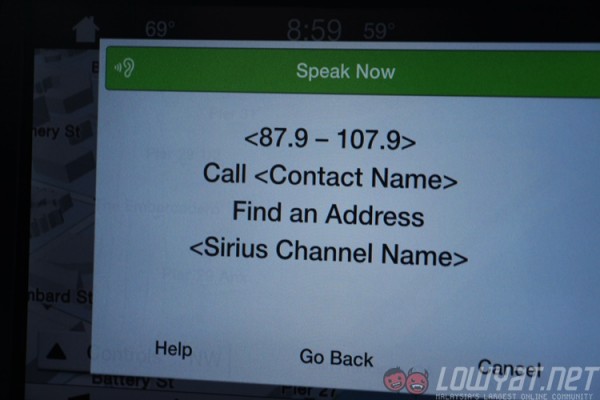 The platform now is also much faster at capturing voice commands, and supports a wider range of controls using your voice.
The platform now is also much faster at capturing voice commands, and supports a wider range of controls using your voice.
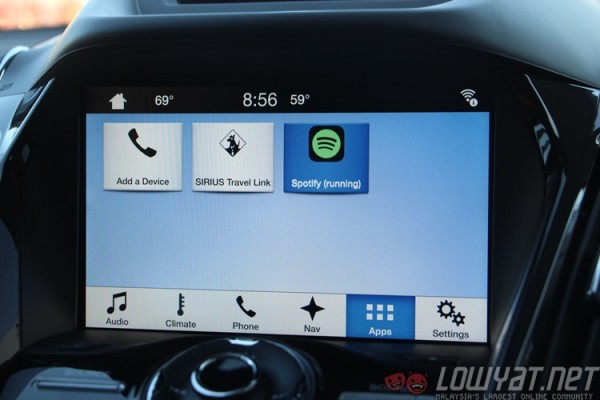 One of Sync 3’s supported apps is Spotify. Basically, the app is running on your phone, but is wirelessly transmitted to play on your car’s audio system via Sync 3. Ford says there are around 85 apps that support this feature on Sync 3, with many more to come.
One of Sync 3’s supported apps is Spotify. Basically, the app is running on your phone, but is wirelessly transmitted to play on your car’s audio system via Sync 3. Ford says there are around 85 apps that support this feature on Sync 3, with many more to come.
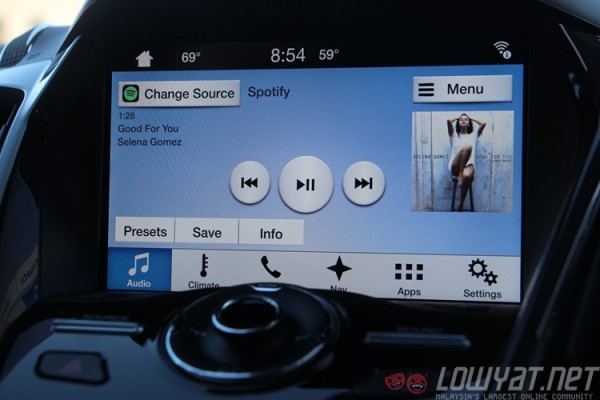 The idea is that once your phone is paired, you basically can stow it away since all controls for the app are also relayed to Sync. Also, Sync 3 supports both Android and iOS devices, as part of Ford’s vision of making the system platform-agnostic – you don’t want to switch cars whenever you switch from an Android phone to an iPhone.
The idea is that once your phone is paired, you basically can stow it away since all controls for the app are also relayed to Sync. Also, Sync 3 supports both Android and iOS devices, as part of Ford’s vision of making the system platform-agnostic – you don’t want to switch cars whenever you switch from an Android phone to an iPhone.
https://www.youtube.com/watch?v=FwloYQTEA5U&feature=youtu.be
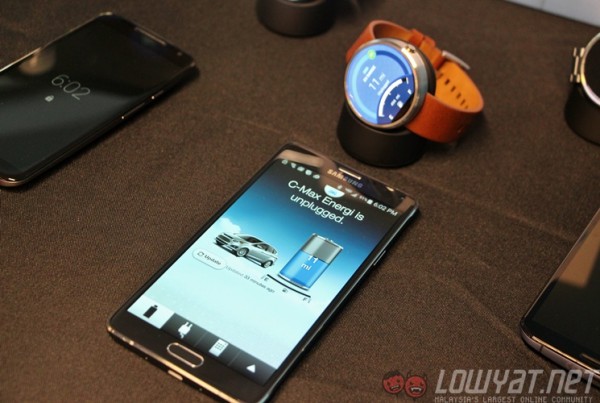 Finally, there’s the MyFord Mobile app that’s being developed for Android Wear. The app, which is available to all owners of a Ford hybrid vehicle, provides easy access to glanceable information regarding their vehicle, such as the battery charge and mileage remaining, fuel level and a map of the charging stations available nearby the car.
Finally, there’s the MyFord Mobile app that’s being developed for Android Wear. The app, which is available to all owners of a Ford hybrid vehicle, provides easy access to glanceable information regarding their vehicle, such as the battery charge and mileage remaining, fuel level and a map of the charging stations available nearby the car.
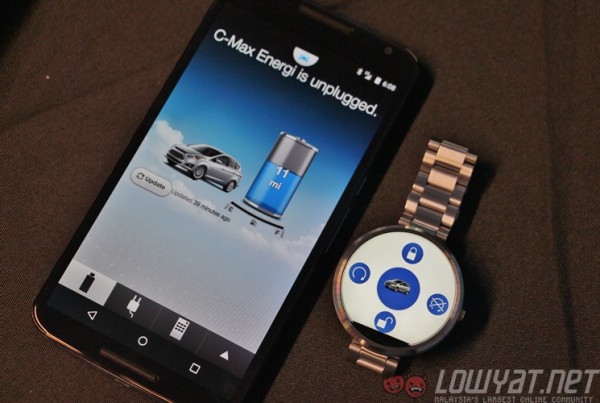 The smartwatch version of this app provides the same amount of features, but condensed in a smaller screen. In addition, the app also allows drivers to lock and unlock their vehicles using their smartwatches. The Android Wear version will be available in the coming weeks, while an Apple Watch variant is in the works.
The smartwatch version of this app provides the same amount of features, but condensed in a smaller screen. In addition, the app also allows drivers to lock and unlock their vehicles using their smartwatches. The Android Wear version will be available in the coming weeks, while an Apple Watch variant is in the works.
Follow us on Instagram, Facebook, Twitter or Telegram for more updates and breaking news.

